
Stanley is a very talented hamster who runs a garage. There he fixes his customers’ cars, taking care of everything from overheating to flat tires. After a busy day, Stanley returns home happily. Attractively simple shapes and bold colors in black outlines on uncluttered pages not only chronicle Stanley’s work but begin with illustrations of tools used. The same format is used in a companion book, Stanley the Builder (opens in a new window).
Stanley’s Garage
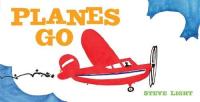
The horizontal format of this sturdy board book is just right for images of all manner of flying machine — from a seaplane to a space shuttle. Each deft image is accompanied by a similar refrain, “The helicopter goes,…” followed by onomatopoeic sounds dramatically presented in bold typeface.
Planes Go
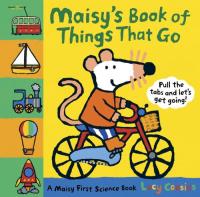
Maisy, the engaging white mouse, gets around by bicycle, trolley, and even dreams of flying in a rocket ship. Bright, child-like illustrations and a tab to pull on each page encourage active participation in this very basic but very appealing introduction to modes of travel.
Maisy’s Book of Things that Go
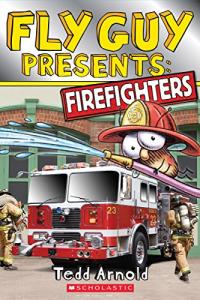
Buzz and his pet fly, Fly Guy, are back. Boy and fly visit a fire station to learn more about what firefighters do as well as a bit about fire safety. Comic illustrations of bug-eyed Buzz and Fly Guy combine with actual photographs present information accessibly and with good humor.
Fly Guy Presents Firefighters

Each vehicle on the construction site snuggles down at the end of the day. Sound has been added to this edition of the picture book version (opens in a new window) with the same title. Icons on each page ask young readers to match the button which makes the sound — from the final sounds of digging and dumping to yawns and snores.
Goodnight, Goodnight, Construction Site

Drones — “remotely operated vehicles” — have changed the military and now may even change the way packages are delivered. Full color photographs and illustrations and brief text introduce a large number of different drones and their uses.
Drones: From Insect Spy Drones to Bomber Drones
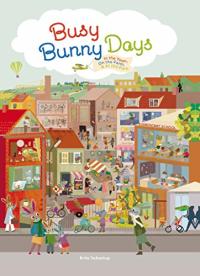
From morning to nighttime, there’s a lot going on in town, on a farm and at the port, each populated by animals that are stand-ins for people. Readers will discover many things on each large, colorful double page spread as the day passes in each locale. A clock and brief text on each page provides clues as to what to hunt for in this book reminiscent of Richard Scarry.
Busy Bunny Days
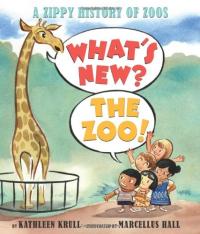
A spunky look at zoos from all over the world beginning 4400 years ago in the Sumerian city of Ur and ending at the present day San Diego Zoo. The many places worldwide and zoos’ purposes are presented in informative text and lighthearted cartoon illustrations.
What’s New? The Zoo: A Zippy History of Zoos

Dog lovers everywhere will appreciate the canine shenanigans of best friends, Lucie and Kate. They are neighbors in a no-dogs-allowed apartment but they use their amazing dog-bone necklaces to become dogs! Dog jokes and dog notes by the authors conclude this playful novel.
Teacher’s Pets
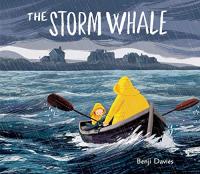
“Noi lived with his dad and six cats by the sea.” But he was lonely until he rescues a baby whale that reconnects Noi with his busy fisherman father. Gentle language is enhanced by mellow, warmly hued illustrations of their seaside home.
The Storm Whale
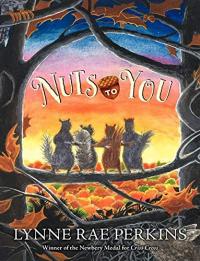
When a squirrel is snatched up by a hungry hawk (but not eaten), his courageous friends go after him. Together they discover another squirrel society and save their homes from devastation in this clever, quite funny, and often insightful tale that provides a glimpse into what squirrel civilization might be.
Nuts to You!

What happens to Pop’s cell phone when he and Sam fall asleep at the zoo? It passes from one animal to the next! Cartoon illustrations and straightforward text are just right to create and easy, amusing, fanciful adventure.
A Night at the Zoo
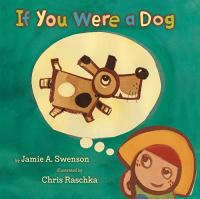
Effervescent language and lively illustrations ask readers what kind of dog, cat, fist, bird, bug, frog, or dinosaur they’d be — but since they are not, they can “arrooo! like a dog, hiss! like a cat,” or even “chomp, stomp, roar! like a dinosaur” in this playful, imaginative book.
If You Were a Dog

Beginning readers will appreciate the easy language and color photographs that describe necessary preparations and what zookeepers then feed animals. Children are shown at a petting zoo and eating a snack themselves in the book’s final images.
Feeding Time at the Zoo
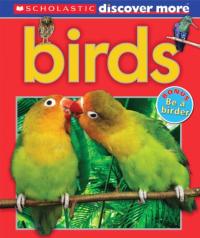
Bird basics — from characteristics to colors — are briefly introduced in an attractive, accessible package. In addition to a table of contents, glossary and index, this series provides additional material on birding (bird-watching) via an online, downloadable book.
Discover More: Birds
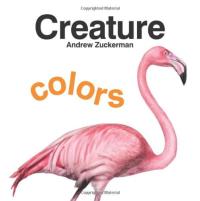
Each dramatic photograph of an animal (such as a pink flamingo) on a white background is accompanied by one word: its color. In Creature Numbers (opens in a new window), Animals from 1 to 10 bounce, swim, and pose on the equally open pages of a companion book for a fine, fun introduction to basic concepts.
Creature Colors
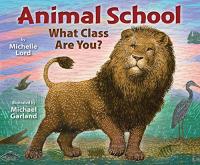
This look at vertebrates glimpses mammals, fish, birds, reptiles and amphibians though rhyming couplets and attractive, textured woodcuts. A brief outline of characteristics and examples in each category and further resources are also included.
Animal School: What Class Are You?
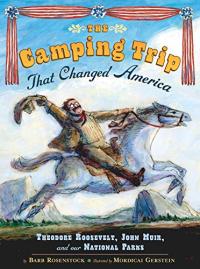
Caldecott medalist Mordicai Gerstein captures the majestic redwoods of Yosemite in this little-known but important story from our nation’s history. In 1903, President Theodore Roosevelt joined naturalist John Muir on a trip to Yosemite. Camping by themselves in the uncharted woods, the two men saw sights and held discussions that would ultimately lead to the establishment of our National Parks. [Good Reads]
The Camping Trip That Changed America

Who can jump? Lift the flap to see small animals in action ending with “YOU can jump!” Bold, uncluttered illustrations and repeated language are sure to absorb young children. The same format is used in the equally engaging Who Can Swim? (opens in a new window)
Who Can Jump?
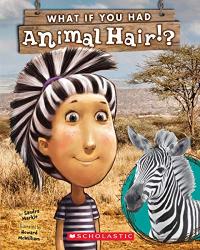
Animals and people both have hair. Photographs of animals and droll illustrations of kids with that hair on opposing pages provide a light, humorous, and surprisingly informative look at different animals — and of course, hair.
What If You Had Animal Hair?
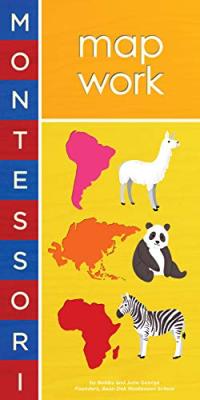
“Our world is made of land and water.” The land is called continents; the water oceans. Select animals that live on each continent are presented on sturdy, textured pages that will hold up to multiple readings and handling by young children while providing a visually appealing introduction to maps and animals.
Montessori: Map Work

Dog lovers — and those who aren’t — are sure to be touched by twelve short stories about shelter dogs that find just the right home. Written by various authors, each story is different but each will resonate with sophisticated readers (or listeners) in this varied short story collection.
Lucky Dog: Twelve Tales of Rescued Dogs
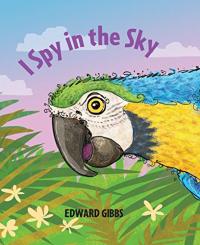
Die-cuts let readers ‘spy’ a portion of an animal while text provides clues as to what it might be. With the turn of the page the entire bird is portrayed. Basic characteristics and attractive illustrations provide an informative glimpse of a variety of fowl while playing a variant of a familiar game.
I Spy in the Sky
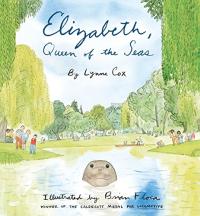
Most elephant seals live in the ocean but one prefers the Avon River in Christchurch, New Zealand. Though the townspeople try to relocate Elizabeth, the huge seal finds her way back three times to the delight of many, especially a boy named Michael. Based on a true story, this well-told fictionalized account is expressively illustrated.
